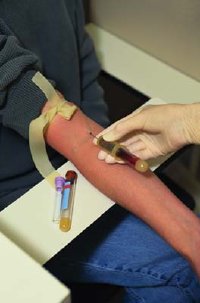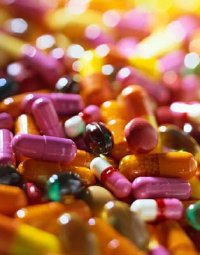Vitamin B3 has been used in the treatment of numerous diseases. It's available in several different forms, and some are safer than others, making supplementation a confusing issue. In this article, we'll take a look at the therapeutic benefits of niacin, and we'll learn about getting enough niacin in your diet through food and supplements. Here's a preview:
- What Is Vitamin B3?
Vitamin B3, or niacin, works with other b-complex vitamins to metabolize food and provide energy for the body. Niacin was first discovered by researchers looking for a link between diet and the disease pellagra. They determined that pellagra was common among people with a corn-based diet, and they were able to treat the disease with nicotinic acid, a form of niacin. - Benefits of Vitamin B3
Niacin is very effective at correcting high cholesterol and preventing or reversing heart disease. It can be used to treat insulin-dependent diabetes. It might also be effective in treating arthritis and migraine headaches. However, taking niacin supplements in high doses can be dangerous to your health. - Foods That Contain Vitamin B3
Niacin is found in foods with a high protein content, such as meat, eggs, and peanuts. It can also be found in milk, mushrooms, and greens. Niacin is added to "enriched" breads and cereals. - Vitamin B3 Deficiency
A niacin deficiency causes pellagra, a disease that is characterized by red, rough skin, weakness, loss of appetite, and digestive disturbances. If left untreated, pellagra can be fatal. - Vitamin B3 Supplements
Niacin can be used to treat many illnesses and ailments, but too much niacin causes serious liver problems. Do not take niacin supplements unless you are under the supervision of a health care professional.
Niacin is just one of many essential nutrients that need to be a part of your diet. For more information, visit these links.
- Vitamin A, or retinol, plays a vital role in vision. Learn more in How Vitamin A Works.
- A vitamin B1, or thiamin, deficiency results in the disease beriberi. Learn more in How Vitamin B1 Works.
- In How Vitamin B2 Works, read about how B2, or riboflavin, works in concert with its B-complex relatives to metabolize carbohydrates, fats, and proteins.
- Vitamin B5, or pantothenic acid, can be found in all living cells and in all foods. Learn about its importance to your diet in How Vitamin B5 Works.
- Vitamin B6 is actually three substances, pyridoxine, pyridoxamine, and pyridoxal, that work to metabolize protein and amino acids. Read more in How Vitamin B6 Works.
- To learn about the many vitamins in our diet, how much you should be eating, and where to find them, go to our general Vitamins page.
Advertisement




